Qualcomm – the company behind our beloved Snapdragon-based processors that we’re beginning to see in more and more devices today – has announced that they’ve begun sampling their first dual core Snapdragon processors. The new models are the MSM8260 and the MSM8660 and they feature two cores with the ability to run up to 1.2Ghz per core.
They’ve referred to these chipsets as the third generation of Qualcomm chipsets and will be targeted for manufacturers looking to make high-end smartphones. Steve Mollenkopf – the executive vice president of Qualcomm and president of Qualcomm CDMA Technologies – states:
Qualcomm’s first-generation Snapdragon chipsets set a new standard for advanced smartphones and smartbook devices, and our second-generation solutions are already shipping in volume.We are very excited by the innovation our customers are already showing as they begin designing products based on our dual-core MSM8260 and MSM8660 chipsets.
Qualcomm also has a third chipset in their third generation of products – the QSD8672 – which has the ability to reach 1.5ghz in each core. That chipset was sampled in the second half of 2009 and we expect to see devices carrying the chipset sometime in 2010. Read ahead for the full press info.
Third-generation Snapdragon Solutions Feature Two Application Processor Cores Running up to 1.2 GHz to Enable Advanced Smartphones
TAIPEI, Taiwan – June 01, 2010 – Qualcomm Incorporated (Nasdaq: QCOM), a leading developer and innovator of wireless technologies, products and services, today announced the Company has sampled its first dual-CPU Snapdragon™ chipsets. The Mobile Station Modem™ (MSM™) MSM8260™ and MSM8660™ solutions integrate two of the Company’s enhanced cores running at up to 1.2GHz. Targeted at enabling high-end smartphones, the MSM8x60 solutions are third-generation chipsets from the Company’s expanded Snapdragon platform, which has been powering smartphones, tablets and smartbook devices in markets around the world.
“Qualcomm’s first-generation Snapdragon chipsets set a new standard for advanced smartphones and smartbook devices, and our second-generation solutions are already shipping in volume,” said Steve Mollenkopf, executive vice president of Qualcomm and president of Qualcomm CDMA Technologies. “We are very excited by the innovation our customers are already showing as they begin designing products based on our dual-core MSM8260 and MSM8660 chipsets.”
The MSM8260 for HSPA+ and MSM8660 for multi-mode HSPA+/CDMA2000® 1xEV-DO Rev. B feature two enhanced CPU cores running at up to 1.2GHz for high levels of Web application and multimedia performance, including a powerful GPU with 3D/2D acceleration engines for Open GLES 2.0 and Open VG 1.1 accelration, 1080p video encode/decode, dedicated low power audio engine, integrated low power GPS, and support for 24-bit WXGA 1280 x 800 resolution displays.
Qualcomm’s Snapdragon family of chipset solutions includes:
• First-generation products: QSD8x50™ with 1GHz enhanced core
• Second-generation products: MSM8x55™ and QSD8x50A™ with 1GHz enhanced core, including multimedia optimizations and 1.3GHz enhanced core, respectively
• Third-generation products: MSM8260, MSM8660 and QSD8672 with dual-CPU architecture featuring enhanced cores running at up to 1.2GHz and 1.5GHz, respectivelyQualcomm Incorporated (Nasdaq: QCOM) is a leader in developing and delivering innovative digital wireless communications products and services based on CDMA and other advanced technologies. Headquartered in San Diego, Calif., Qualcomm is included in the S&P 100 Index, the S&P 500 Index and is a 2010 FORTUNE 500 company. For more information, please visit Qualcomm around the Web:
www.qualcomm.com
Blog: www.qualcomm.com/blog
Twitter: www.twitter.com/qualcomm
Facebook: www.facebook.com/qualcomm .Except for the historical information contained herein, this news release contains forward-looking statements that are subject to risks and uncertainties, including the Company’s ability to successfully design and have manufactured significant quantities of ASIC components on a timely and profitable basis, change in economic conditions of the various markets the Company serves, as well as the other risks detailed from time to time in the Company’s SEC reports, including the report on Form 10-K for the year ended September 27, 2009, and most recent Form 10-Q.



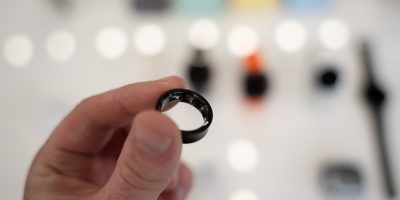


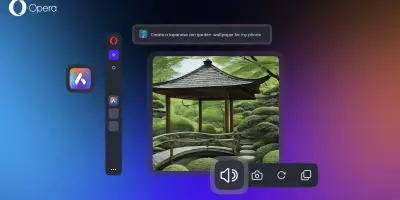
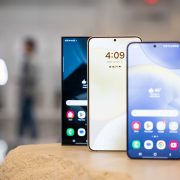
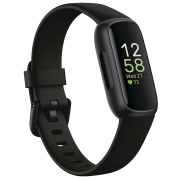
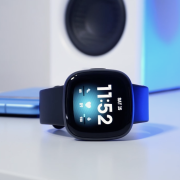

Halo 2 on Android ftw? :-)
I need to get this on our future iphone 9gs 3240hd. Prototypes lurking aroung in Vietnam…..AGAIN!
Everything speeds/grows up … processor speed,RAM,ROM …
But as you probably know – A Herd of Buffalo Can Only Move as Fast as the Slowest Buffalo.
Therefore I would appreciate some progress regarding batteries!!!
How good can this be if battery technology still sucks
@Steve Jobs: (if that’s your real name, which it isn’t…) — nobody cares about iTrash except for retarded little girls trying to get knocked up. Get a life.
@Sober: Just because it clocks that high does NOT mean that it will have the processing capacity of an AMD64 X2 running at the same clock rate. Far from it in fact. Not that these aren’t impressive mobile chips.
@Anybody: any idea how many HSPA bands the 8260 supports? Would be nice to do have a universal HSPA device that works with ALL HSPA providers. This “only compatible with X provider” nonsense is really tiring. Hint: 850, 900, 1700, 1800, 1900, 2100 MHz are ***ALL*** required. And throwing 700 MHz in on top of that would be REALLY nice.
@goatman: I’m not sure if you realize this, but a 1980 intel 8086 uses WAY more power than a modern mobile CPU, despite being MUCH MUCH MUCH weaker. As the technology evolves, power requirements tend to DROP. They are probably targeting the same power consumption as their older/slower chips.
Now that Qualcomm has dropped the dual core Snapdragon SoC I am wondering when T.I. will do the same with their OMAP 4430/4400 SoC. The other question that has not been answered in any articles I have seen relating to the Snapdragon 8260/8660 is whether or not they are Cortex A-9 based? If not then even though dual core is cool it will be a real disappointment.
I heard there was an intel chip for mobile phones coming out later this year that will allow several days of battery life.
@goatman… dual core uses less power in general than a single core of equal standards… batteries are slowllly improving and CPU’s are jumping along but as long as they are smart like they are being and making more powerful CPU’s requiring less energy im happy
This is pretty cool.
I would love a 1.5 x 2 cores on my phone.
Not sure what I would need it for though.
@jo: I can hook you up with a battery that will keep your home air conditioner running for several days. It’ll cost you a bundle and will require a forklift to move.
I’m sure you can appreciate how crazy that sounds, but just remember that intel isn’t really interested in the straight truth — they’ll bend it any way they can to raise their market share, and the fact that you need to lug around a couple of car batteries doesn’t make their statements LEGALLY wrong.
Also, part of that chip you’re talking about (the so-called “moorestown” chip) is a very un-friendly GPU, the very much NON-INTEL POWERVR-SGX535 (which was also part of their “poulsbo” chips). The driver situation for those GPUs is grim (to say the least). The GPU used in the qualcomm parts uses AMD IP (i.e. RADEON) and shares some striking architectural similarities to the AMD Radeon R600 chips… which potentially means that a good portion of the r600 open source drivers could be applicable to those qualcomm parts.
Me tinks battery not catching up with technology, me would like my phone to charge solar power to make up for lost time…
dual-core + smartphone = nerdgasm